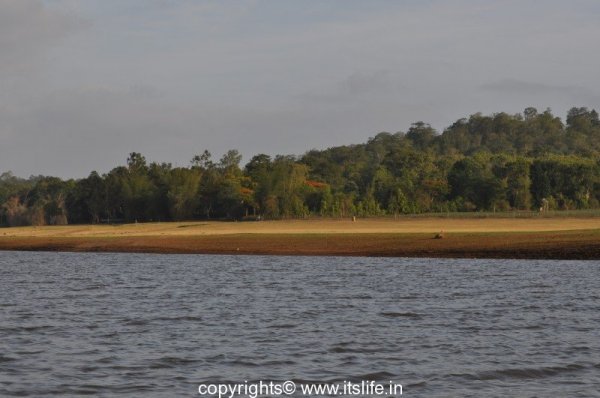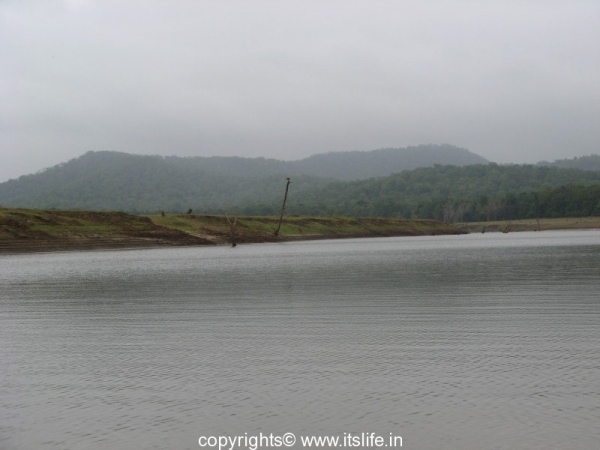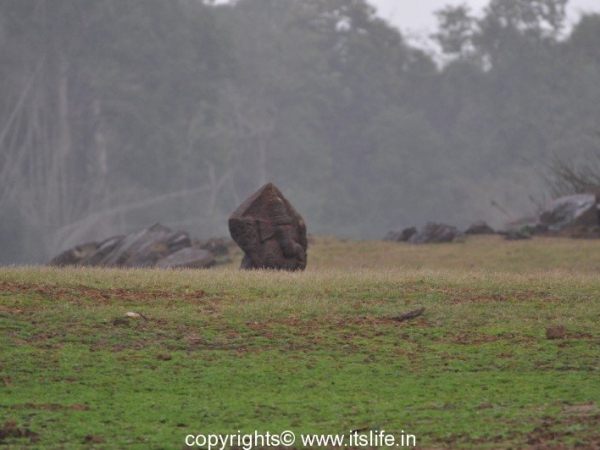Jungle book was one of my favorite books and the movie by Disney bought this book alive. I think the makers of the movie toured Kabini Wildlife Sanctuary before making the movie. I am stating this with so much conviction because the jungle here resembles the one in the book and brings out all the characters to life and you can relive every moment written in the book.
Kabini Wildlife Sanctuary is part of the Kabini reserve nestling in the Nilgiri biosphere between Nagarhole and Bandipur Wildlife Sanctuaries. As the bank of the River Kabini is lush with juicy grass, Bamboo, trees, various shrubs, and bushes, the place is ideal for abundant wildlife and bird life.
When a dam was built across River Kabini, it resulted in submerging many hectares of thick forest and few villages. For the birds to perch, the tree trunks exposed in the water were left untouched.
The open space around the River is a playground to herds of Hathi (Elephant) who trumpet and frolic with their family members squirting water and snacking on the young Bamboo shoots. It is a sight to behold! You can also see Deer groups walking, resting, and quenching their thirst near the River.
You notice that the Deer and Sambar are also edgy and alert with their ears constantly perked up to run for their lives when in threat. This is due to the large presence of predators like Bageera (Leopards), Sher Khan (Tigers), Dhols (Wild Dogs), Akela, Raksha, Rama (Indian Wolves), Tabaqui (Jackal) and so on.
Mysa (water Buffalo in the book replaced by Gaur), the biggest cattle in the world roam leisurely in herds. Wild Boar or Pigs are found in groups enjoying the sunshine and juicy plants. Jacala (Crocodiles) thrive as the River is rich with food and the availability of a comfortable bank to bask in the sun.
If the boat safari on the River offers a spectacular view of wildlife and aquatic bird-life, the safari inside the thick forests takes you to the homes of the wild animals and the other shore birds. The forest is spread over 643 square kilometers (Nagarhole forests included). Baloo (Sloth Bears), Kaa (Python), Thuu (Cobra), Rat Snakes, Bandar log (Monkeys and Langurs) are all spotted in these thick forests. No doubt then that this was a favorite hunting camp for the Maharajahs of Mysore and the British Viceroys.
Kabini River Lodge located on the banks of the River was the private hunting Bungalow of the Maharaja of Mysore.
It later became a lodge and hosted the British Viceroys and the royalties from India and abroad for whom hunting was just a game!
Picture above, Maharaja of Benares and the Yuvaraja of Benares in Kabini, January 1928
The lodge is now a part of the Jungle Lodges and has photographs of the surrounding wilderness and royal guests of yore, a bar, and few furnished rooms. Gandaberunda (two faced eagle), the symbol of Mysore gleams on the wooden background and reminds us the history of this place.
Bird life in Kabini is neck breaking as your neck is sure to sprain after a day of looking at all directions to catch a glimpse of aquatic as well as shore birds.
Birds like Osprey, Brown-headed Fishing Eagle, Ikki (Kites), Drongo, Ferao (Woodpecker), Kingfisher, Stork, Mao (Peacock) and many more. There are almost 250 species of bird life in Kabini.
Here is Mowgli!
Col. John Wakefield affectionately called as Papa was an Indian-born Englishman, who knew the Indian jungles and wildlife like the back of his hand. He was pioneer in mooting the idea of Jungle tourism in India and came to Kabini in the 1970’s. He setup a Jungle lodge for the Government of Karnataka, which was the beginning to setup the Jungle Lodges and Resorts organization. He was the resident director at Kabini since 1986 to the time of his passing away in 2010 at the ripe old age of 92.
Note: Hathi, Sher Khan, Mowgli, Ikki, Ferao, Mao, Baloo, Kaa, Thuu, Bandar Log, Jacala, Mysa, Bageera, Akela, Raksha, Rama, Tabaqui, Hathi are all characters of Jungle Book written by Rudyard Kipling.
See the following post for the pictures of wild animals and birds of Kabini reserve:
Nearby places to visit:
Kabini Dam
Gyudmed Monastery, Gurupura
Place Statistics:
Type of place: Wild life sanctuary
Situated: Heggadadevana kote (H.D.Kote) taluk, Mysore district, Karnataka
Distance: 80 Km from Mysore, 220 Km from Bangalore
Transport: Well connected by road
Facilities: Many resorts are available for overnight stays, Jeep and Boat Safari are available




